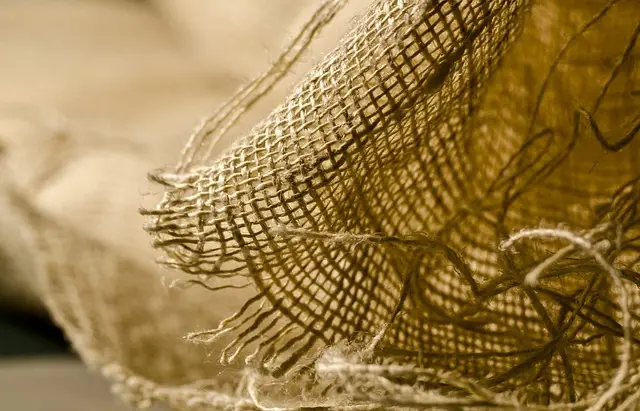Muscle soreness from intense physical activity is caused by microscopic tears in muscle fibers and subsequent inflammation. Kratom, a plant from Southeast Asia with active compounds like mitragynine and 7-hydroxymitragynine, has been found to alleviate this discomfort within the kratom family, particularly strains like Maeng Da and Bali, which offer a balanced effect of both stimulation and sedation. However, it's important to use kratom cautiously due to its potency and variability in effects among individuals. Users should adhere to recommended dosages, be aware of potential interactions with other medications, and consider their overall health when incorporating kratom into pain management. The kratom family, specifically Mitragyna Speciosa, has been traditionally used for its analgesic properties, with alkaloids such as mitraphylline and 7-hydroxymitragynine engaging with opioid receptors to potentially provide pain relief comparable to morphine without strong sedation or euphoria. Nonetheless, the variability in individual responses necessitates careful dosing and strain selection. It's essential to approach kratom use with an understanding of its legal status, and to seek medical advice while considering scientific research that is still evolving regarding its full effects and safety. A comprehensive strategy for muscle soreness management using kratom should include regular exercise, a balanced diet, proper hydration, and professional medical guidance.
Muscle soreness can be a persistent and uncomfortable companion for many, whether due to intense exercise, physical labor, or other activities. Exploring natural remedies has become increasingly popular, leading to a spotlight on the kratom family—a group of plants with potential analgesic properties. This article delves into how specific alkaloids within Mitragyna speciosa, commonly known as kratom, may offer relief from muscle soreness. We will navigate the remedial landscape of the kratom family, examining scientific evidence on its efficacy and discussing safe practices for incorporating it into your wellness routine. Join us as we unravel the potential of this botanical remedy for muscle recovery and pain management.
- Understanding Muscle Soreness and Its Remedies Within the Kratom Family
- The Role of Mitragyna Speciosa Alkaloids in Muscle Soreness Relief
- Safe Practices and Considerations When Using Kratom for Muscle Soreness Management
Understanding Muscle Soreness and Its Remedies Within the Kratom Family

Muscle soreness can arise from a variety of activities, ranging from intense exercise to everyday physical tasks. This discomfort is often a result of microscopic tears in muscle fibers that occur when they are stressed beyond their usual capacity. The body’s natural response to this strain is inflammation, which can lead to pain and hindered mobility. Within the kratom family, specific strains are recognized for their potential to alleviate such muscle soreness. Kratom, a tropical evergreen tree native to Southeast Asia, has gained attention for its medicinal properties, particularly in managing pain. The mitragynine and 7-hydroxymitragynine alkaloids found in kratom are thought to interact with the body’s opioid receptors, providing analgesic effects. Users often turn to strains like Maeng Da or Bali for their pain-relieving qualities. These strains are known within the kratom family for their balance of stimulating and sedative effects, which can help manage muscle soreness while promoting a sense of well-being. It’s important to approach the use of kratom with caution, as its efficacy and safety profiles can vary depending on individual physiology and the specific strain utilized. Users should adhere to recommended dosages and consider consulting healthcare professionals before integrating kratom into their pain management regimen, especially if they are taking other medications or have pre-existing health conditions.
The Role of Mitragyna Speciosa Alkaloids in Muscle Soreness Relief

The kratom family, specifically Mitragyna Speciosa, has been traditionally used for its potential analgesic properties. Within this botanical grouping, alkaloids such as mitraphylline and 7-hydroxymitragynine are thought to play a significant role in muscle soreness relief. These naturally occurring compounds interact with the body’s opioid receptors, potentially providing pain relief similar to morphine but without the same level of sedation or euphoria. Users often report that kratom helps alleviate muscle discomfort, which may be attributed to these active alkaloids working synergistically to modulate pain signals. The efficacy of kratom in this regard can be particularly beneficial for individuals experiencing soreness from physical exertion or chronic conditions. It’s important to note the complexity of kratom’s effects, as individual responses can vary significantly based on dosage, strain, and personal physiology. Additionally, while the potential for muscle soreness relief is promising, it’s crucial to approach the use of kratom with caution, considering its legal status and the need for further scientific research to fully understand its mechanisms and safety profile.
Safe Practices and Considerations When Using Kratom for Muscle Soreness Management

When incorporating kratom into your regimen for muscle soreness relief, it is imperative to approach its use with caution and awareness. The kratom family, encompassing Mitragyna speciosa and related species, has been traditionally used for its potential pain-relieving properties. It is essential to understand the correct dosage and strain selection as the efficacy and effects can vary based on these factors. Optimal relief may be achieved by starting with a lower dose and gradually adjusting as needed, while also considering the duration of use. Regular monitoring of your body’s response to kratom is crucial, as individual sensitivities can differ significantly.
Safety should be a priority when using kratom; this includes adhering to recommended dosages to minimize risks and avoiding combinations with other substances that could potentiate its effects or lead to adverse reactions. It is also advisable to maintain a balanced diet and stay hydrated, as these practices can enhance the body’s natural recovery processes. Additionally, those managing muscle soreness through kratom should engage in regular physical activity conducive to their fitness level, ensuring that any strain-induced relaxation or pain relief does not lead to inactivity or overexertion. Consistent exercise aids in maintaining muscle health and can complement the analgesic effects of kratom for optimal muscle soreness management. Always consult with a healthcare professional before introducing kratom into your wellness routine, especially if you have underlying health conditions or are taking other medications.
In conclusion, muscle soreness can be a significant discomfort for many individuals, particularly those who engage in physical activities regularly. The kratom family, specifically Mitragyna speciosa, has shown potential in providing relief from muscle soreness due to its alkaloid profile. Understanding the role of these alkaloids within the kratom family and their mechanisms of action is crucial for safe and effective usage. While incorporating kratom into muscle soreness management can be beneficial, adherence to cautious practices is imperative. It’s always advisable to consult with healthcare professionals before integrating any new substance into one’s health regimen. With responsible use and further research, the kratom family may offer a natural alternative for those seeking relief from muscle soreness.






